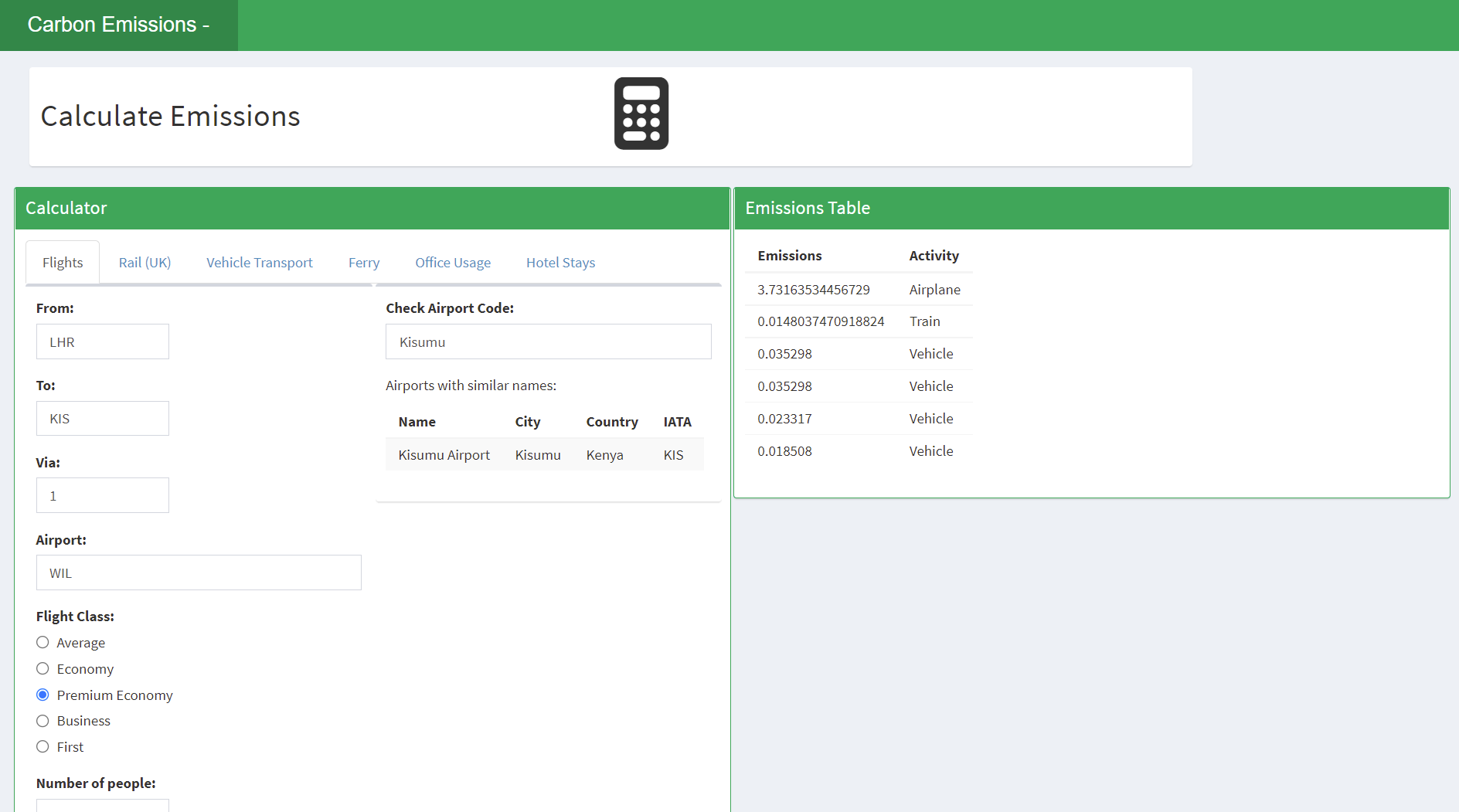carbonr is an R package designed to conveniently
calculate carbon-equivalent emissions using data from the UK
Government report (2024).
Install the development version from GitHub with:
# install.packages("devtools")
devtools::install_github("IDEMSInternational/carbonr")carbonr was developed to provide a reliable and
reproducible method for calculating carbon-equivalent emissions. It aims
to:
carbonrThere are different types of functions in carbonr. There
are travel and accommodation based estimates based on general
activities, making them easier to use without detailed knowledge of
specific inputs:
Travel-Related Emissions
airplane_emissions()ferry_emissions()rail_emissions()land_emissions()vehicle_emissions()Accommodation-Related Emissions
hotel_emissions()building_emissions()office_emissions()household_emissions()These functions allow for more precise calculations by inputting specific values, such as the quantity of materials used:
construction_emissions()electrical_emissions()material_emissions()metal_emissions()paper_emissions()plastic_emissions()raw_fuels()These functions are specific to calculating emissions from clinical and medical activities:
anaesthetic_emissions()clinical_emissions()clinical_theatre_data()All functions return carbon-equivalent emissions in tonnes. A Shiny
app is available via shiny_emissions() for a GUI-based
calculation.
Some examples demonstrating how to use the carbonr
package functions can be found in the vignette.
Beyond the Emissions Available in the 2025 UK Report
Additional functions are available for emissions not covered in the UK Government report, such as those related to operating theatre waste. Further details on using the operating theatre waste functions are provided in the vignette.
The carbon_credit_price() function provides values based
on World Bank
data.
Shiny App
An interactive calculator using Shiny can be accessed by the
shiny_emissions() function. This calculator uses some of
the functions in the carbonr package:
shiny_emissions()
As well as those outlined in the “issues”, planned features include:
We welcome contributions from the community to enhance the
carbonr package. If you would like to contribute, please
follow these guidelines:
Contribute to the software: If you wish to contribute new features, fix bugs, or improve the documentation, please fork the repository, create a new branch for your changes, and submit a pull request. Ensure that your code follows the existing style and include tests where applicable.
Report issues or problems: If you encounter any bugs or have suggestions for improvements, please open an issue in the GitHub repository. Provide as much detail as possible, including steps to reproduce the issue if applicable.
Seek support: For any questions or help with
using carbonr, you can reach out by opening a discussion in
the GitHub
Discussions.
Your feedback and contributions are invaluable in helping us improve and maintain the package.
UK Government Report: Department for Energy Security and Net Zero. (2023). Greenhouse Gas Reporting: Conversion Factors 2023.
UK Government Report: Department for Energy Security and Net Zero. (2024). Greenhouse Gas Reporting: Conversion Factors 2024.
Radiative Forcing Factor: DEFRA, 2016. Government GHG conversion factors for company reporting.
Clinical Anaesthetic Emissions: Various sources including -
Varughese, S. and Ahmed, R., 2021. Environmental and occupational considerations of anesthesia: a narrative review and update. Anesthesia & Analgesia, 133(4), pp.826-835;
McGain, F., Muret, J., Lawson, C. and Sherman, J.D., 2020. Environmental sustainability in anaesthesia and critical care. British Journal of Anaesthesia, 125(5), pp.680-692;
Wyssusek, K., Chan, K.L., Eames, G. and Whately, Y., 2022. Greenhouse gas reduction in anaesthesia practice: a departmental environmental strategy. BMJ Open Quality, 11(3), p.e001867;
Sherman, J., Le, C., Lamers, V. and Eckelman, M., 2012. Life cycle greenhouse gas emissions of anesthetic drugs. Anesthesia & Analgesia, 114(5), pp.1086-1090.